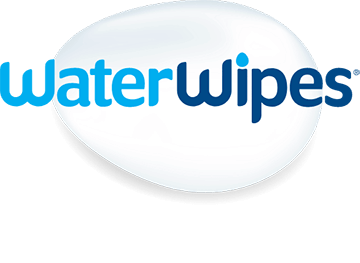Once you emerge from the first year, things are usually a lot easier. Most sleeping and feeding challenges have been left behind - fingers crossed - and you enter a sweet spot of understanding your child's needs, which are still relatively simple.
Almost as soon as you've found your groove, your baby is now a toddler and will soon make the transition out of their cot, and out of nappies.
A well-meaning friend or relative might tell you how their child was toilet trained by 11 months, but there's no reason to rush the process. In fact, letting your child lead the way seems to make for a smoother transition.
When should I start toilet training?
Some children will be ready to use the toilet from 18 months whereas others will be closer to 3 before they're willing to learn. It's important to watch for signs your child is ready although ultimately, it's up to you as the parent to bite the bullet and start.
If your child attends daycare or kindy, you might like to chat with their teacher about what happens while in their care. They can also let you know if they think your child is ready to start using the toilet - they have experience with lots of toddlers after all.
A note on day vs night: daytime toileting is usually successful before nighttime toileting and you might find that your child stays in nappies at night for months or even years after they've been toilet trained. It can be normal for a child to wet the bed (or need night nappies) even once they've started school. However, if you're worried it's best to seek advice from your doctor.
Signs of readiness
An awareness of needing "to go". This might look like pausing before filling their nappy or running off to do their business in private.
Telling you once they've done a wee or poo in their nappy.
Showing an interest in the toilet, maybe following you into the bathroom or wanting to "help"
Can pull their pants up and down, or are at least happy to try and practice
How do we start?
There isn't a right or wrong way to toilet train and what works for one family might not work for another.
You might like to take a more intensive, parent-led approach and have your child out of nappies and into undies in a week. Or you could let your child take the lead which might mean the process takes longer.
Whichever method you choose, follow these tips for an easier transition:
Start talking with your child about toilet training, no longer wearing nappies, doing wees in the toilet etc. Try and keep the mood light, calm and fun - no pressure.
Buy a potty and/or step for the main toilet so it's easier for your child to get themselves on and off. You can also buy a seat that attaches to the main toilet seat to make the hole more child-sized and less daunting.
Take your child to use the toilet (or at least encourage them to try and use the toilet) at regular times throughout the day.
Try incorporating a new routine of using the toilet when your child wakes up for the day, wakes from a nap, or before their bath.
Buy some training pants or undies and let your child wear them when they feel comfortable. Be prepared for accidents and know that even accidents are teaching your child. In fact, it might just be the physical reminder they need to make that connection.
Moving house, a new sibling, a change at kindy or any other major life event can disrupt your toilet training efforts. Keeping consistent can help get your child back on track.
What about poos?
A common challenge for parents when toilet training is getting their toddler to use the toilet for poos.
Your child might happily do wees on the toilet, even telling you when they need to go and not having any accidents. You’re feeling confident...even starting to wonder what the fuss is about. But you notice that your child:
Is yet to do a poo on the toilet
Makes a big fuss when you try to encourage poos on the toilet
Wears undies but will ask for a nappy to do poos
They’re holding on/getting constipated
This might just be a sign that you need to take it slower and encourage this step a little more gently:
Perhaps chat casually with your child about the process, without any pressure to actually use the toilet.
Get to know their usual pattern and ask if they need to go - again, without any pressure.
After your child has done a poo on the toilet, keep using WaterWipes for a quick clean up, (but make sure to throw in the bin, not flush down the toilet.) Some kids are more sensitive than others and might object to lots of wiping with toilet paper.
Make hand washing a fun game, something to look forward to after using the loo.
Reference:
Information within this blog is based on Plunket NZ recommendations.
Plunket. (n.d.). Toilet training your child. Retrieved May 12, 2020, from https://www.plunket.org.nz/your-child/2-5-years/health-and-daily-care/toilet-training-your-child/

